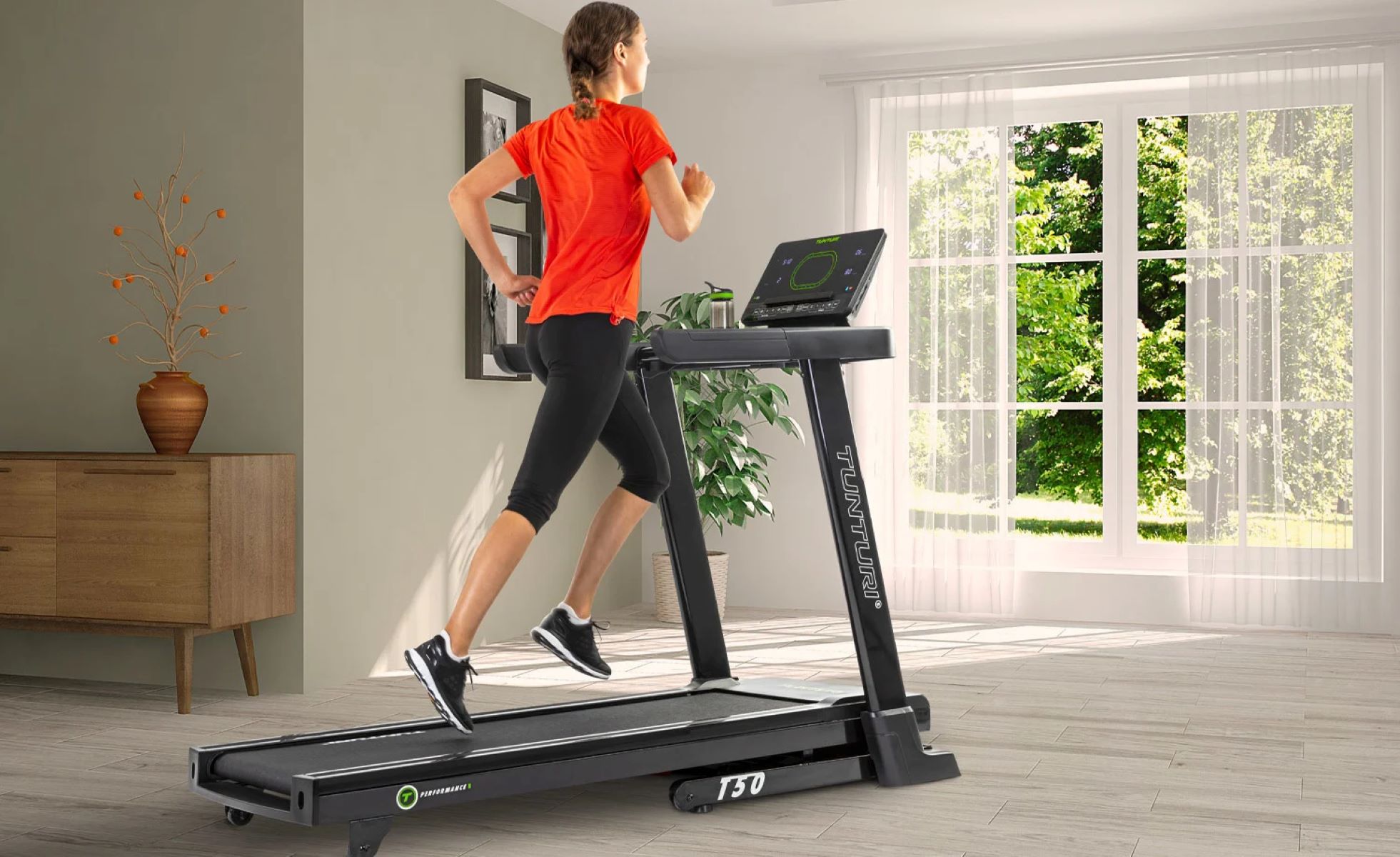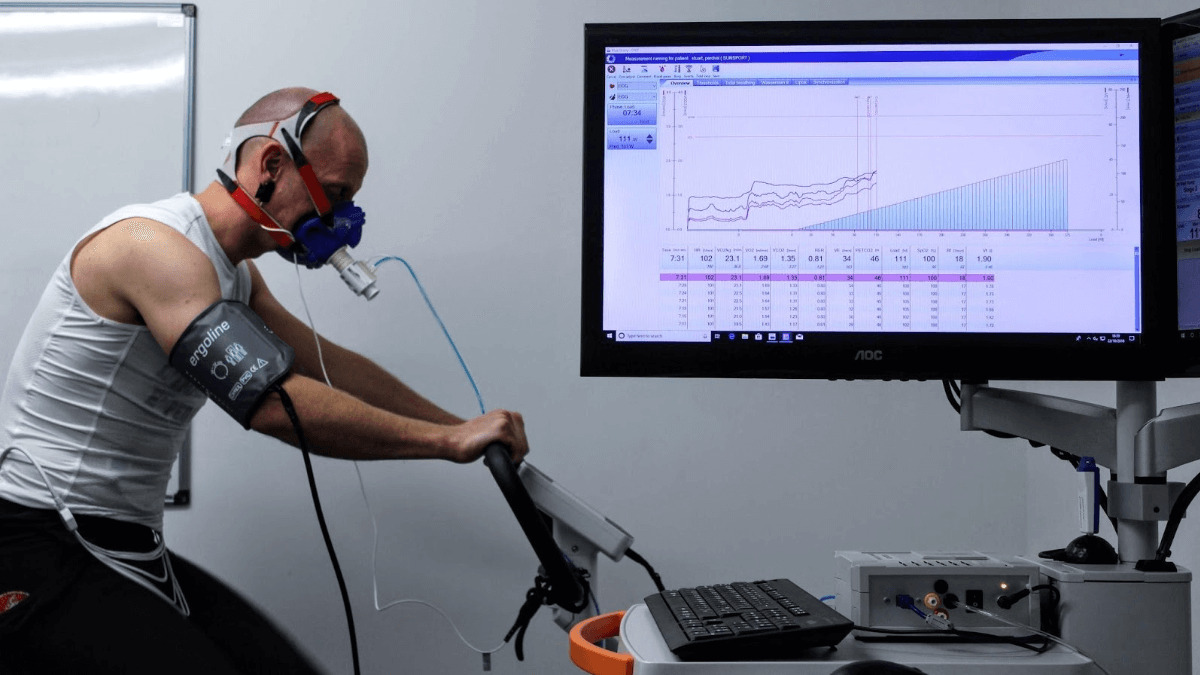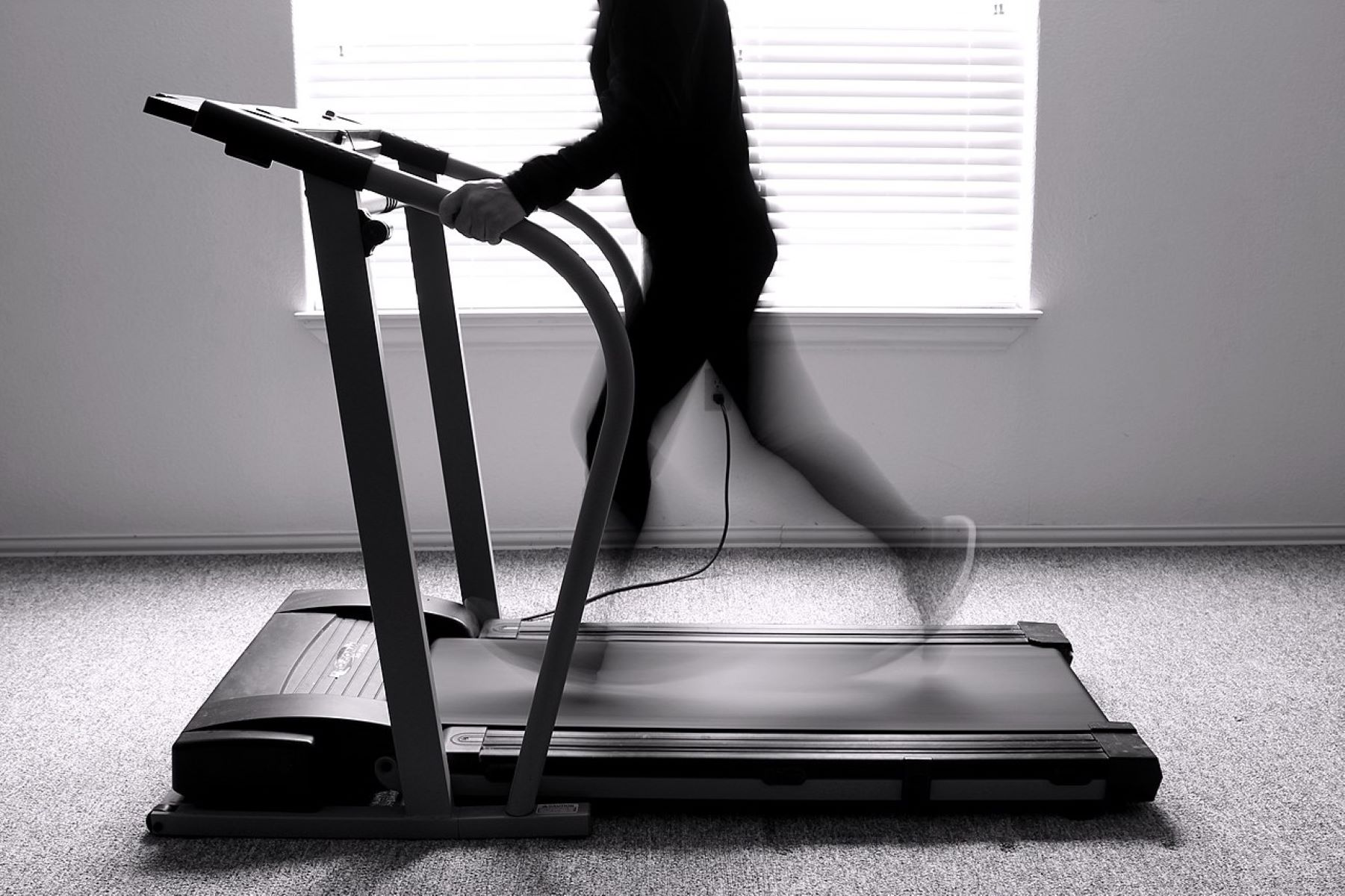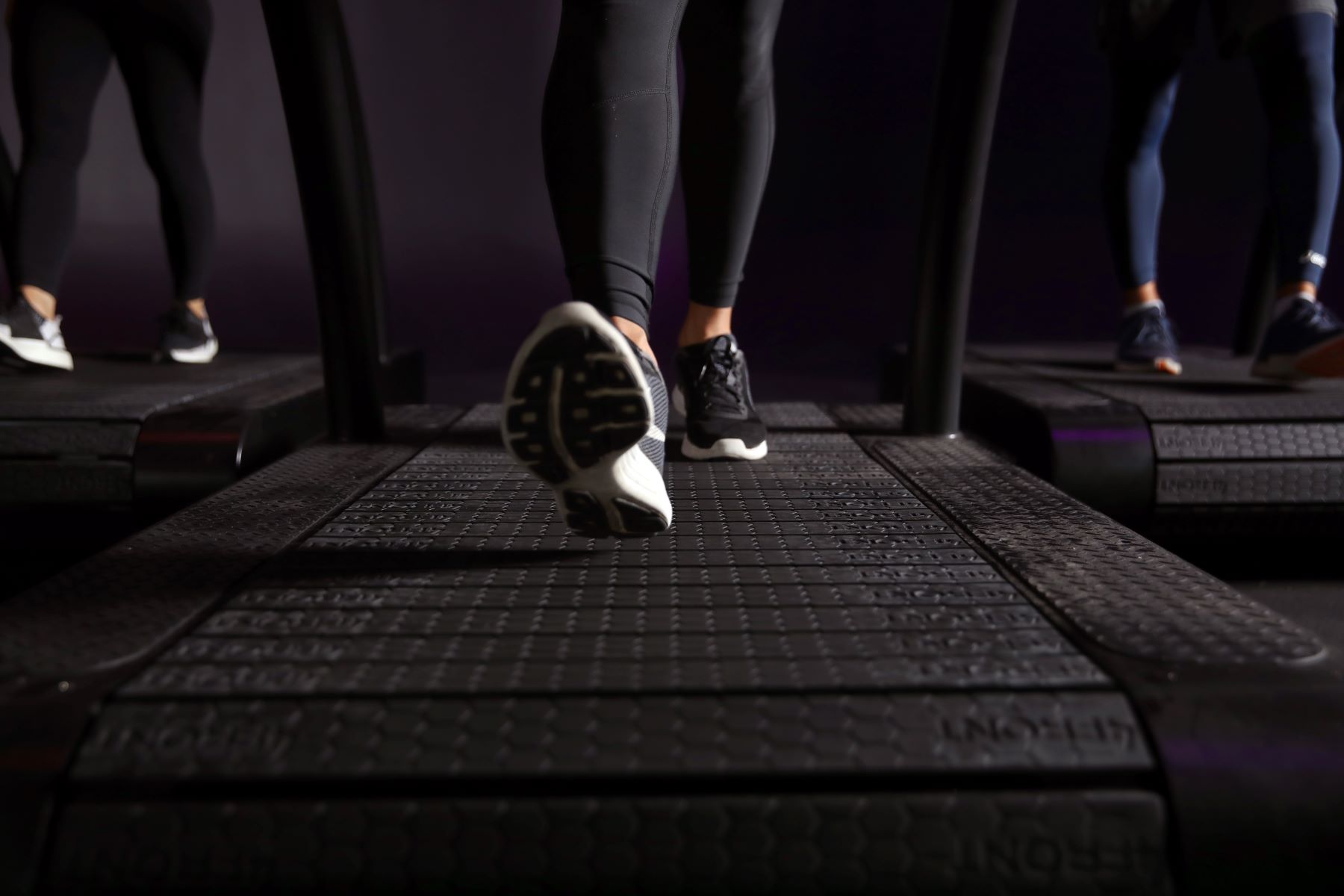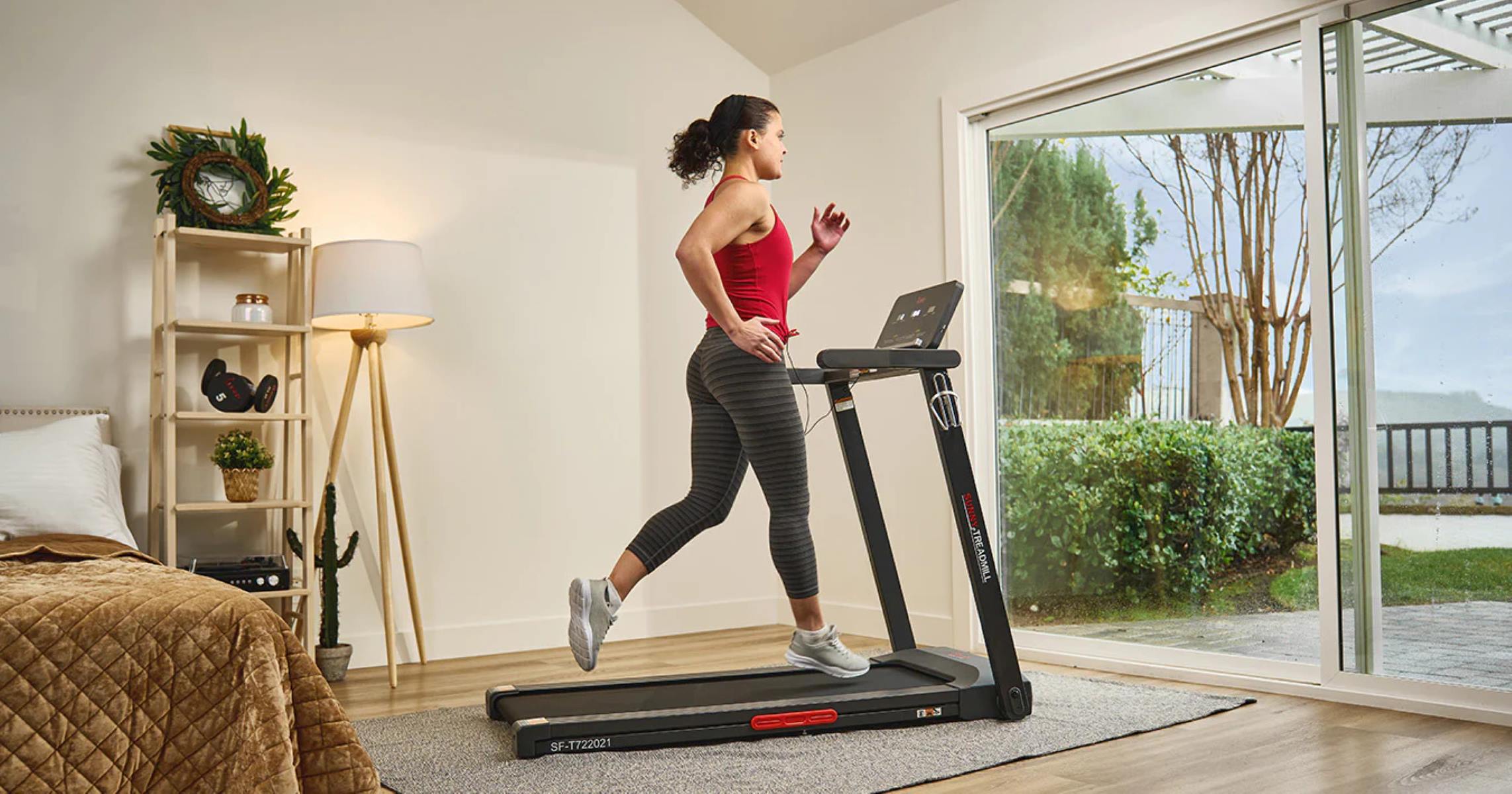Home>Misc>Featured>How Long Does It Take To Walk 5 Miles On Treadmill
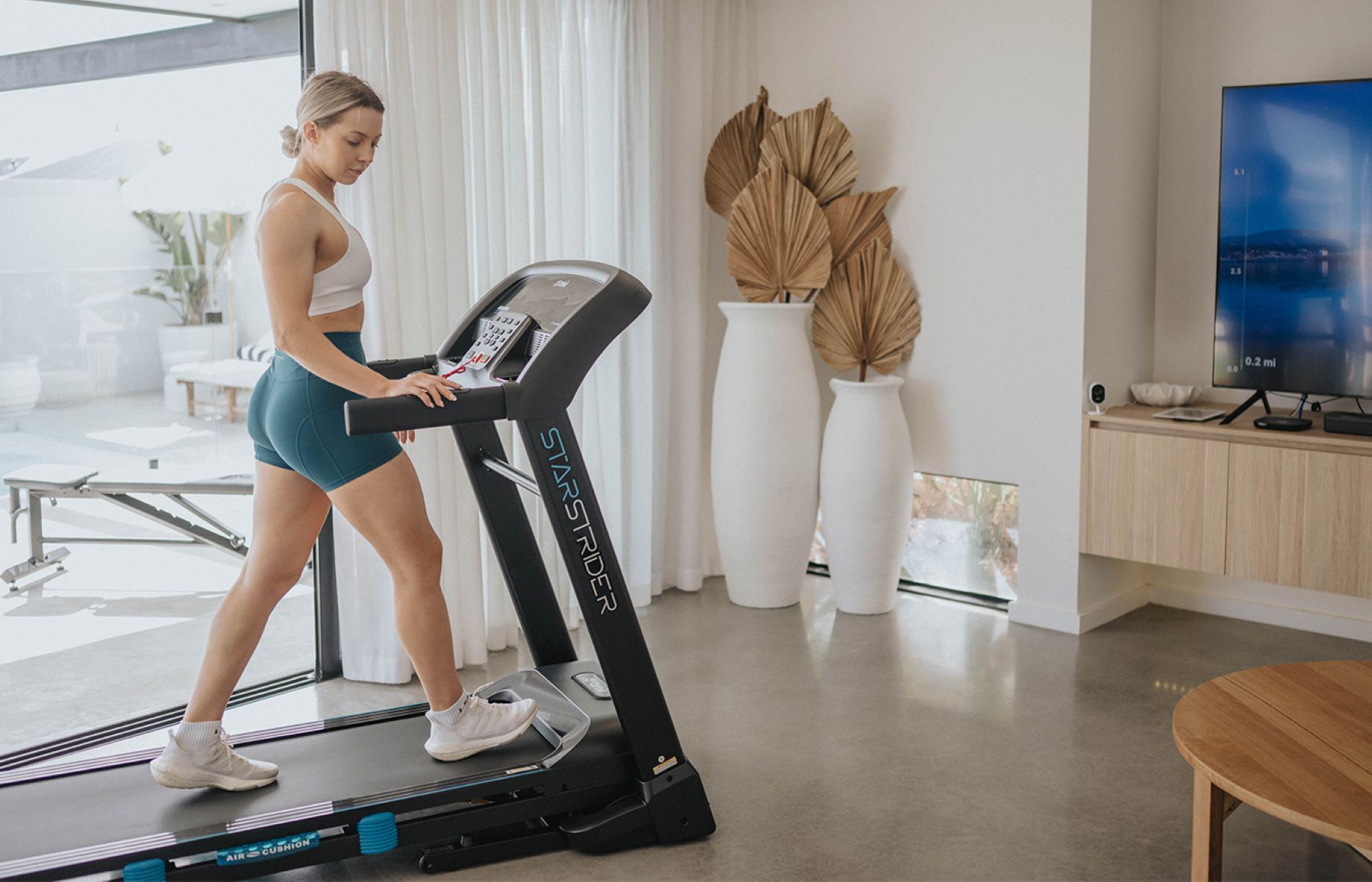

Featured
How Long Does It Take To Walk 5 Miles On Treadmill
Modified: January 22, 2024
Discover the featured guide on how long it takes to walk 5 miles on a treadmill, including tips and insights. Enhance your workout routine today!
Introduction
Welcome to our guide on how long it takes to walk 5 miles on a treadmill. Walking is a great form of exercise that can be done anywhere, including the comfort of your own home with a treadmill. Whether you’re a beginner or a seasoned walker, understanding the factors that affect your walking speed on a treadmill and how to calculate your walking time can help you set realistic goals and track your progress.
Walking on a treadmill offers numerous benefits, including improved cardiovascular health, increased calorie burning, and reduced stress. It’s a convenient way to stay active and maintain a regular exercise routine, especially when outdoor conditions or time constraints make it challenging to walk outdoors.
However, the time it takes to walk 5 miles on a treadmill may vary depending on several factors. Your walking speed, fitness level, incline, the terrain of the treadmill, and any breaks you take during the walk can all influence the time it takes to complete the distance.
In this comprehensive guide, we will explore the factors that affect your walking speed on a treadmill, how to calculate your walking time, the average walking speed on a treadmill, tips to increase your walking speed, and the overall benefits of walking on a treadmill.
Whether you’re looking to set a new personal record, burn some calories, or simply enjoy a leisurely stroll, this guide will provide you with the information you need to make the most of your treadmill walking sessions.
Factors Affecting Walking Speed on a Treadmill
Several factors can influence your walking speed on a treadmill. By understanding these factors, you can adjust your approach and optimize your walking performance.
1. Fitness Level: Your fitness level plays a significant role in determining your walking speed on a treadmill. Individuals who are more physically fit tend to have a faster walking speed compared to those who are less fit. Regular exercise and conditioning can help improve your cardiovascular endurance and muscular strength, allowing you to walk at a faster pace.
2. Incline: The incline setting on a treadmill can significantly impact your walking speed. Walking on an incline mimics walking uphill and requires more effort, resulting in a slower pace. Conversely, walking on a flat surface or a slight decline can enable you to walk at a faster speed. Adjusting the incline level to challenge yourself or make your walk more comfortable can affect your overall speed.
3. Walking Technique: Paying attention to your walking technique can also affect your speed. Stride length, arm swing, and foot placement all play a role in how fast you can walk. By maintaining an upright posture, swinging your arms in sync with your stride, and taking longer steps, you can increase your walking speed and efficiency.
4. Treadmill Settings: The specific settings of your treadmill can impact your walking speed. Factors such as the speed increments, maximum speed, and responsiveness of the treadmill belt can influence how fast you can walk. Some treadmills are designed for higher-speed workouts, while others may have limitations that affect your overall speed.
5. External Distractions and Entertainment: The presence of distractions or entertainment during your workout can affect your walking speed. If you are engaged in watching a show or listening to music, you may inadvertently slow down. Conversely, if you are motivated by an upbeat playlist or a virtual scenic route on the treadmill display, you may find yourself walking at a faster pace.
6. Personal Factors: Personal factors such as age, body weight, and overall health can also impact your walking speed on a treadmill. Older individuals may naturally have a slower walking speed, while those carrying excess weight may find it more challenging to maintain a fast pace. Any underlying health conditions or physical limitations may also affect your walking speed.
By being aware of these factors and making adjustments as necessary, you can optimize your walking speed on a treadmill and enjoy a more effective workout.
Calculating Walking Time on a Treadmill
Calculating your walking time on a treadmill is essential for setting goals and tracking your progress. There are several methods you can use to determine how long it will take you to walk a specific distance on a treadmill:
1. Manual Timing: The simplest method is to manually time yourself while walking on the treadmill. Use a stopwatch, a timer on your phone, or the built-in timer on the treadmill to measure the time it takes you to complete a specific distance, such as 1 mile. Repeat this process for 5 miles to get an estimate of your walking time.
2. Speed and Distance Display: Many treadmills come equipped with a display that shows your walking speed and distance covered. By monitoring this information during your workout, you can keep track of how long it takes you to walk 5 miles. Simply divide the distance by your speed to calculate the time. For example, if you are walking at a speed of 3 miles per hour, it would take approximately 1 hour and 40 minutes to complete 5 miles.
3. Treadmill Program: Some treadmills offer pre-programmed workouts that allow you to select a specific distance and time goal. These programs can automatically adjust the treadmill speed to help you achieve your desired walking time. Simply choose the program that aligns with your goal and let the treadmill do the calculations for you.
4. Online Calculators: If you prefer a more accurate estimate, various online calculators are available that can calculate your walking time based on your speed and distance. These calculators take into account factors such as incline, pace, and fitness level to provide a more precise estimation of your walking time.
Remember, the calculated walking time is an estimate and may not account for variables such as breaks, fatigue, or changes in speed during your workout. It’s essential to listen to your body and adjust your pace accordingly.
By utilizing these methods, you can accurately calculate your walking time on a treadmill and have a clear understanding of how long it will take you to complete 5 miles.
Average Walking Speed on a Treadmill
The average walking speed on a treadmill can vary depending on factors such as fitness level, age, and personal goals. However, studies suggest that the average walking speed for adults on a treadmill ranges from 3 to 4 miles per hour (mph).
Walking at a speed of 3 mph on a treadmill is considered a moderate intensity level of exercise. At this pace, you can complete 5 miles in approximately 1 hour and 40 minutes. This speed is suitable for those who are just starting their fitness journey or prefer a casual and leisurely walking workout.
As you build strength and endurance, you may be able to increase your walking speed on the treadmill. For example, walking at a speed of 4 mph will enable you to complete 5 miles in approximately 1 hour and 15 minutes, making it a more vigorous workout.
Furthermore, some individuals may be able to walk at even faster speeds, reaching 5 mph or more. These higher speeds are generally achieved by more experienced walkers or those who engage in interval training or running on a treadmill.
Remember, it’s essential to listen to your body and choose a walking speed that feels comfortable and sustainable for you. If you are a beginner, start at a slower pace and gradually increase your speed as your fitness improves. Similarly, if you are aiming for a specific fitness goal, you can gradually increase your walking speed over time.
Ultimately, the average walking speed on a treadmill is subjective and can vary from person to person. It’s important to focus on your individual progress and set goals that align with your fitness level and aspirations.
Tips to Increase Walking Speed on a Treadmill
If you’re looking to increase your walking speed on a treadmill, there are several strategies you can employ to help you achieve your goal. By incorporating these tips into your routine, you can effectively improve your walking speed and enhance your overall workout experience:
1. Warm Up: Begin your treadmill session with a warm-up to prepare your muscles for the upcoming workout. Start by walking at a comfortable pace for 5-10 minutes to gradually increase your heart rate and loosen your muscles.
2. Incorporate Intervals: Interval training involves alternating periods of high-intensity walking with periods of recovery. By incorporating intervals into your treadmill workout, you can increase your overall walking speed. For example, walk at a brisk pace for 1-2 minutes, then slow down to a moderate pace for 1-2 minutes before repeating the cycle.
3. Focus on Proper Form: Pay attention to your posture and walking technique. Maintain an upright position, engage your core muscles, and swing your arms in sync with your stride. These actions can help improve your walking efficiency and speed.
4. Increase Incline: Walking on an incline can help increase your walking speed. Gradually increase the incline level on the treadmill to challenge yourself and simulate walking uphill. This will engage different leg muscles and allow you to naturally increase your speed.
5. Set Realistic Goals: Set achievable goals for yourself and work towards increasing your speed gradually. Trying to push yourself too hard or going from a slow pace to a high speed abruptly can lead to injury or burnout. Focus on making incremental improvements over time.
6. Use Music or a Playlist: Listening to upbeat music or creating a playlist with energetic songs can motivate you to walk at a faster pace. The rhythm and tempo of the music can help you maintain a consistent speed and push yourself a little further.
7. Challenge Yourself: Occasionally, challenge yourself with a higher speed than your comfortable pace. This can be done for a short duration, such as 30 seconds or 1 minute, to push your limits and gradually increase your overall speed.
8. Focus on Breathing: Pay attention to your breathing pattern while walking. Proper breathing allows for better oxygen intake and can help improve your overall performance. Take deep breaths and exhale fully to ensure a steady flow of oxygen to your muscles.
9. Train with Others: Consider joining a walking group or exercising with a workout buddy. Exercising with others can provide motivation and friendly competition, pushing you to increase your speed and endurance.
10. Stay Consistent: Consistency is key in improving your walking speed. Aim to walk on the treadmill regularly, allowing your body to adapt and gradually increase its speed over time.
Remember, increasing your walking speed on a treadmill is a gradual process. It’s important to listen to your body, start at a comfortable pace, and gradually build up your speed. Keep in mind that proper warm-up, technique, and consistent practice are essential for progress. With time and dedication, you can steadily increase your walking speed and achieve your fitness goals.
Benefits of Walking on a Treadmill
Walking on a treadmill offers numerous benefits for both physical and mental well-being. Whether you’re a seasoned walker or just starting your fitness journey, incorporating treadmill walking into your routine can have a significant impact on your overall health. Here are some of the key benefits of walking on a treadmill:
1. Cardiovascular Health: Walking on a treadmill is a form of aerobic exercise that helps improve cardiovascular health. Regular treadmill walking can strengthen your heart, lower blood pressure, and reduce the risk of heart disease, stroke, and other cardiovascular conditions.
2. Weight Management: Walking on a treadmill can be an effective way to manage weight. By burning calories during your walks, you can create a calorie deficit, which contributes to weight loss or weight maintenance. Combining treadmill walking with a balanced diet can help you reach and maintain a healthy weight.
3. Joint-Friendly Exercise: Treadmill walking is a low-impact exercise that puts less stress on your joints compared to activities like running or jumping. This makes it an excellent option for individuals with joint issues, arthritis, or those recovering from injuries. The cushioned surface of the treadmill also provides added support and reduces the risk of impact-related injuries.
4. Improved Muscular Strength and Endurance: Walking on a treadmill engages multiple muscle groups, including the legs, hips, glutes, and core. Over time, regular treadmill walking can improve muscular strength and endurance, leading to better overall fitness and functional ability.
5. Increased Bone Density: Weight-bearing exercises like treadmill walking help increase bone density, which is important for maintaining strong and healthy bones. This can reduce the risk of osteoporosis and fractures, especially in older adults.
6. Stress Reduction: Walking on a treadmill can be a great way to relieve stress and improve mood. Exercise releases endorphins, which are known as “feel-good” hormones that promote a sense of well-being. The rhythmic motion and focus on breathing while walking can also help calm the mind and reduce anxiety and depression.
7. Convenience and Accessibility: One of the major advantages of a treadmill is its convenience and accessibility. You can walk on a treadmill at any time, regardless of the weather conditions outside. With a treadmill at home or in a gym, you have the flexibility to fit exercise into your schedule without any limitations.
8. Progress Tracking: Most treadmills come equipped with features that allow you to track your progress, such as distance, time, speed, and calories burned. This enables you to set goals, monitor your performance, and stay motivated to reach new milestones.
9. Versatility: Treadmills offer a variety of workout options to suit different fitness levels and goals. You can adjust the speed, incline, and even incorporate intervals or hill workouts to make your treadmill walking more challenging and diverse.
10. Longevity Benefits: Regular physical activity, such as treadmill walking, has been linked to increased longevity. By prioritizing your health and incorporating regular exercise into your lifestyle, you can improve your overall quality of life and increase your chances of a longer, healthier lifespan.
With its numerous benefits, walking on a treadmill is an accessible, convenient, and versatile form of exercise that can be tailored to suit your individual needs and abilities. Whether you’re looking to improve your cardiovascular health, manage weight, or boost your mood, incorporating treadmill walking into your routine can have a significant positive impact on your overall well-being.
Conclusion
Walking on a treadmill is a fantastic way to incorporate exercise into your daily routine, regardless of the weather or time constraints. Understanding the factors that affect your walking speed, calculating your walking time, and setting realistic goals can help you make the most of your treadmill workouts.
By implementing tips to increase your walking speed, such as incorporating intervals, focusing on proper form, and gradually challenging yourself, you can improve your walking performance and achieve your fitness goals.
Walking on a treadmill offers numerous benefits, including improved cardiovascular health, weight management, joint-friendly exercise, increased bone density, stress reduction, and convenience. It is a versatile and accessible form of exercise that can be adjusted to suit your individual fitness level and preferences.
Whether you’re a beginner or an experienced walker, walking on a treadmill can help you stay active, enhance your overall fitness, and contribute to your overall well-being. As with any fitness routine, it’s important to listen to your body, start at a comfortable pace, and gradually increase your speed and intensity over time.
So, lace up your shoes, hop on the treadmill, and enjoy the countless benefits that walking on this fantastic exercise machine can offer. Happy walking!
